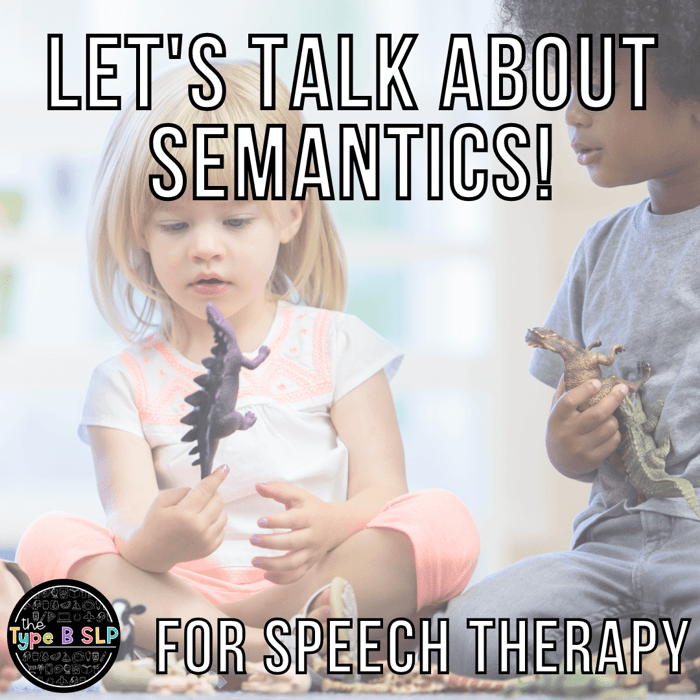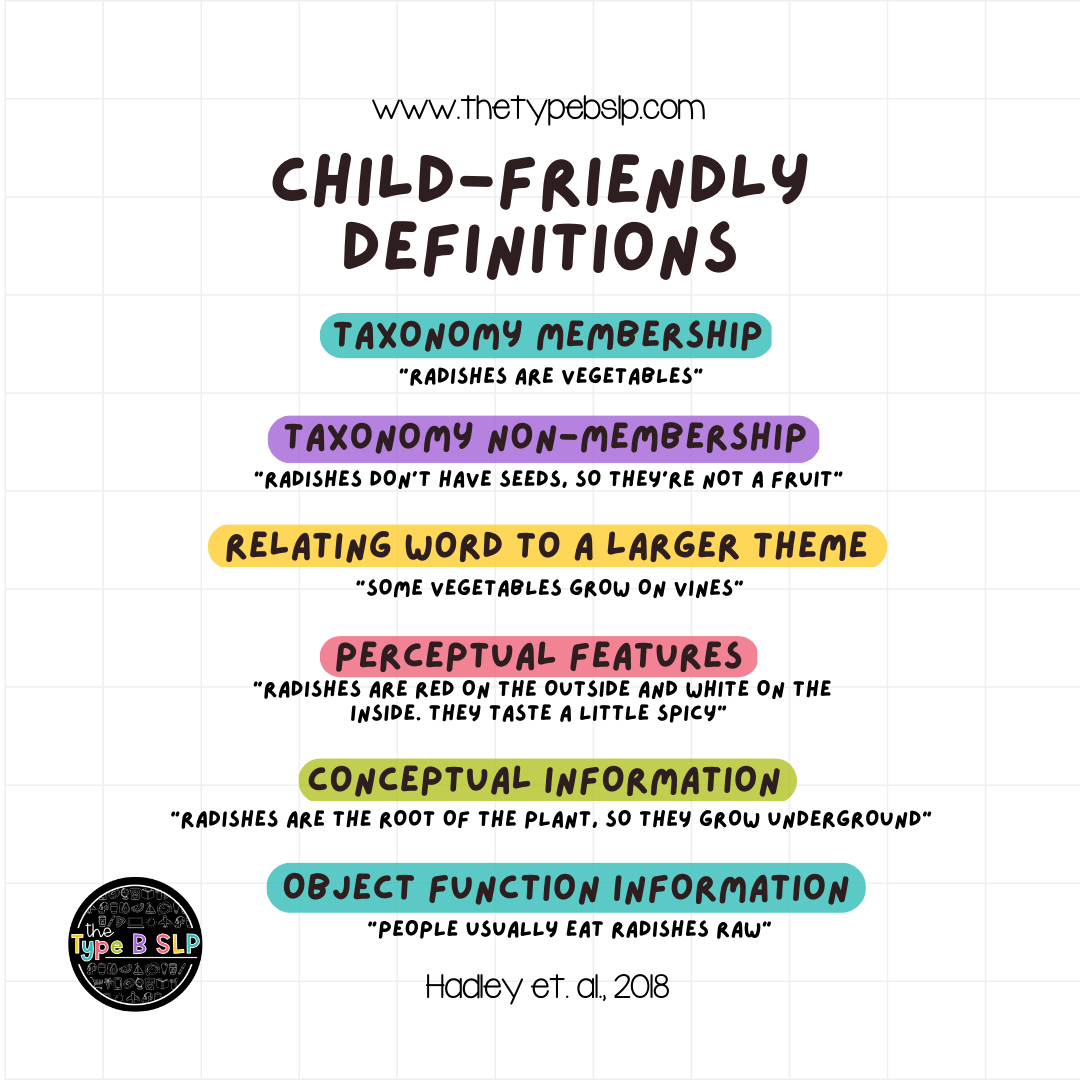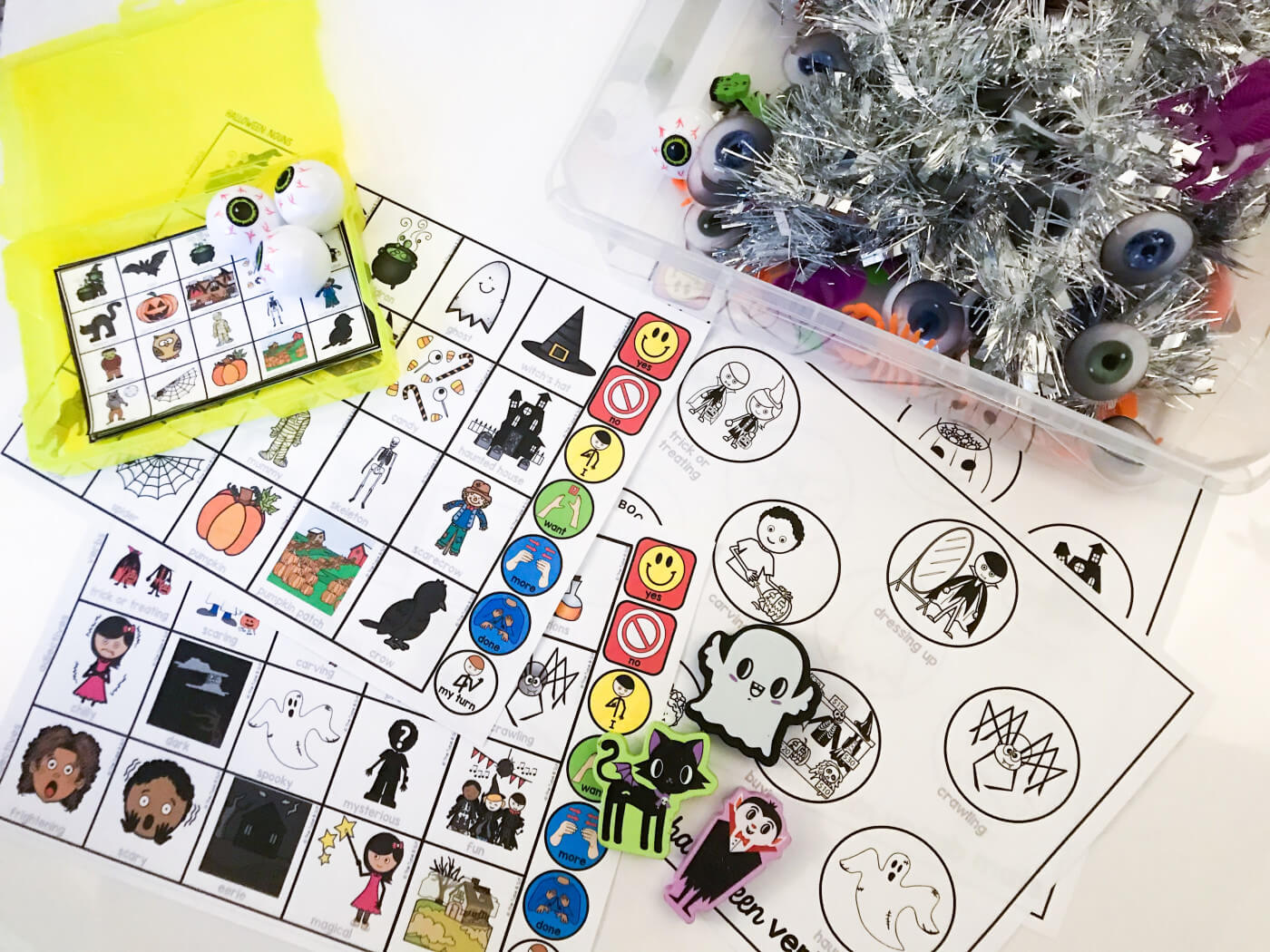
Let's Talk about Visuals & Semantic Relationships!
I'm on a mission to make vocabulary instruction more tangible and manageable for SLPs, so, let's talk about using visuals to build semantic relationships!
Did you know that semantic categories and relationships between those categories are represented in the brain by "overlapping cortical patterns, instead of anatomically segregated regions." (Zhang et al., 2020) Therefore, learning new vocabulary requires making a connection between the word and the concept, and building meaning around it to develop those cortical patterns.
Research has also found that the "neuronal processing of semantic information at sentence level is atypical in preschoolers with SLI (Speech Language Impairments) compared with TD (Typically Developing) children." (Pijnacker et al., 2017) Therefore, our students with SLI often need our support to explore and organize new semantic information.

Recently, I posted about using themes to support vocabulary instruction - you can check that post out here! In this post, we're going to deeper, looking at semantic relationships and visuals we can use to support semantic awareness.
I'll be referencing my FAVORITE resources for working on vocabulary, Themed Word Lists for Speech Therapy and Seasonal Book Companion Visuals in case you need activities ASAP!!
The ResearchOkay, we know that semantic awareness represents cortical patterns in the brain AND is atypical in preschoolers with speech/language impairments... So how can SLPs help build semantic relationships? You might remember from previous posts the work that Hadley et al. (2018) did researching vocabulary. They identified four factors that help our students to build and deepen their vocabulary: - multiple exposures to the new concept, - explicit instruction of the vocabulary, - support to build categories using perceptual features, and - opportunities to connect words to themes. Let's take a closer look at perceptual features. What does that even mean?? Perceptual features refers to information linked to the senses (you know - sight, hearing, smell, taste, touch). What might this look like?
In our speech rooms, we have to work hard to incorporate learning opportunities for perceptual features. Unless you have access to a real horse or sheep, for example.... Enter: visuals. The great news is that we can support this learning through visuals! There's a lot of different ways we can organize visuals to help build categories - including perceptual features.
|

What does this look like in my speech room?
I like to incorporate low prep visuals (🙌) into my sessions to help my kiddos categorize new vocabulary and make connections to form semantic relationships.
I typically have a mix of physical and printed visuals to promote engagement.
I want to foster opportunities to build those perceptual connections - so I try to integrate some physical items (like erasers or toy figurines) to support learning.
I also include opportunities where I have organized new concepts semantically. Here the new concepts are arranged by either by larger theme (ie. Halloween) or taxonomy membership (ie. pears, herbs).
We can use secondary visuals to explore perceptual features, such as shape or size.
A total win for me is highlighting all the factors of the Hadley et al., 2018 checklist in one resource (multiple exposures to the new concept, explicit instruction of the vocabulary, support to build categories using perceptual features, AND opportunities to connect words to themes).
My Themed Word Lists for Speech Therapy and Seasonal Book Companion Visuals provide SO many opportunities for vocabulary instruction, and I love that they are low prep and can be used with my whole caseload!
Hope this helps you to implement visuals to support semantic relationships in your speech room!
Abby
Themed Therapy Cheat Sheets for Speech Therapy: GROWING BUNDLE ONE

$43.70
$64.00
Evidenced based CHEAT SHEETS to use alongside ANY themed book, activity, or game related to themes in the bundle! Be sure to download the preview for a complete look at the product!! This HUGE resource will give you access to TONS of therapy targets and… read more
SourcesHadley, E.B., Dickinson, D.K., Hirsch-Pasek, K., & Golinkoff, R.M. (2018). Building semantic networks: The impact of a vocabulary intervention on preschoolers' depth of word knowledge. Reading Research Quarterly. Advance online publication. doi: 10.1002/rrq.225 Pijnacker, J., Davids, N., Van Weerdenburg, M., Verhoeven, L., Knoors, H., & Van Alphen, P.M. (2017). Semantic Processing of Sentences in Preschoolers with Specific Language Impairment: Evidence from the N400 Effect. Journal of Speech Language and Hearing Research, 60(3), 627-639. https://doi.org/10.1044/2016_jslhr-1-15-0299 Zhang, Y., Han, K., Worth, R.M., & Liu, Z. (2020). Connecting concepts in the brain by mapping cortical representations of semantic relations. Nature Communications, 11(1). https://doi.org/10.1038/s41467-02-15804-w |
- Choosing a selection results in a full page refresh.
- Press the space key then arrow keys to make a selection.




